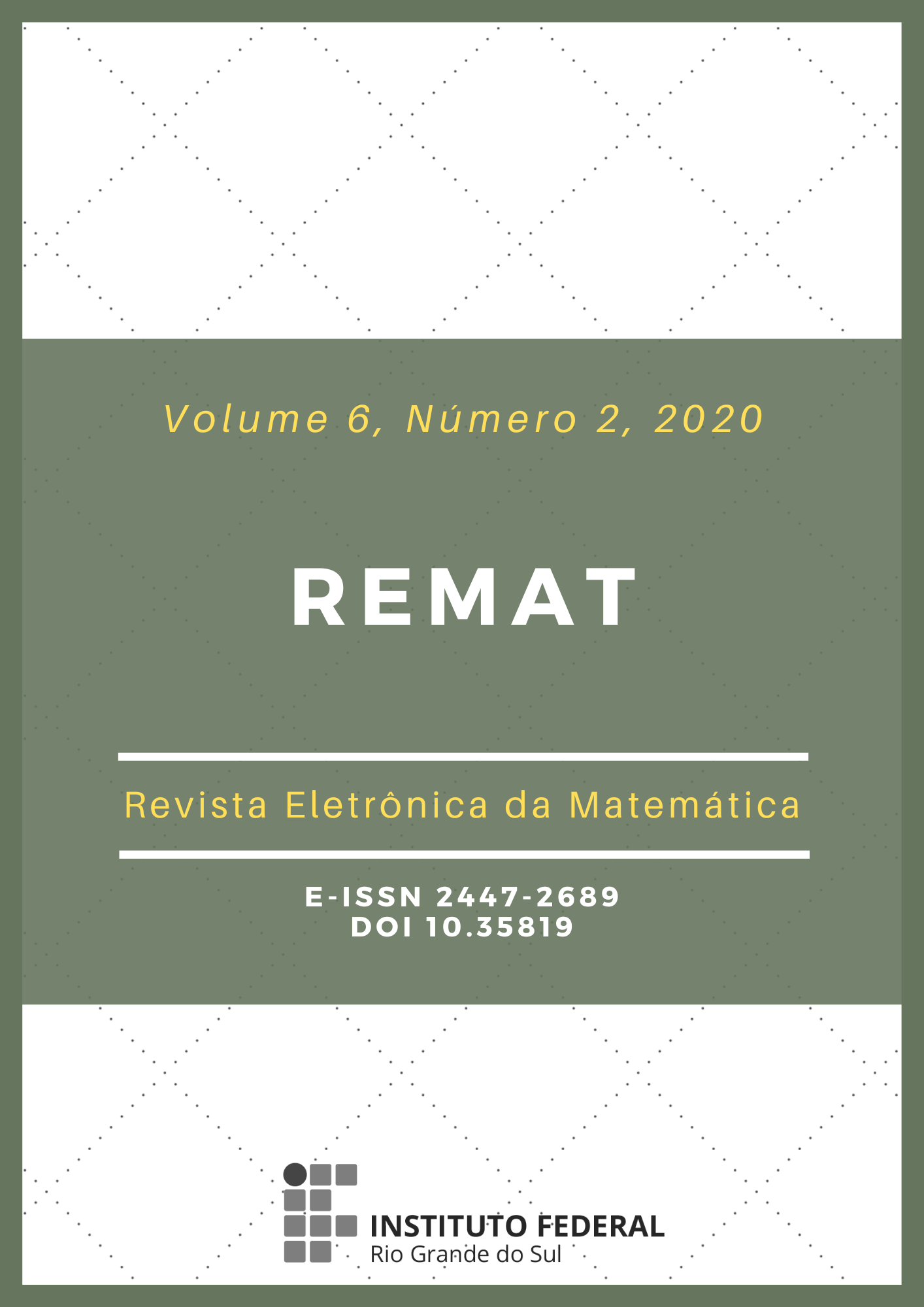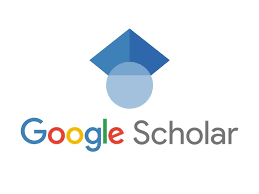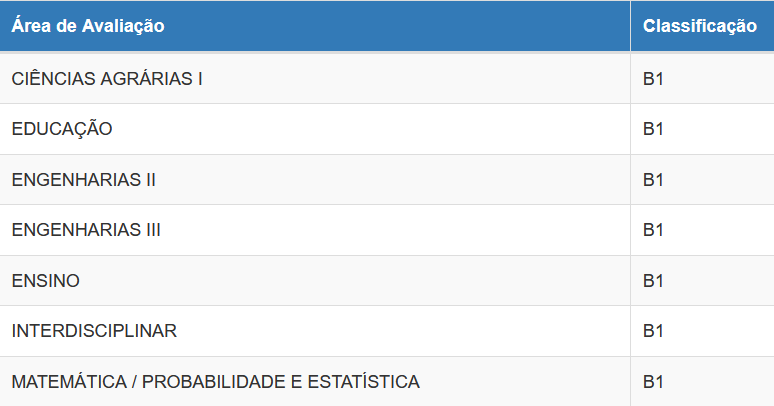1D mathematical model of the dynamics of a glioma with discontinuous diffusion coefficient and variable carrying capacity
DOI:
https://doi.org/10.35819/remat2020v6i2id4067Keywords:
Mathematical Oncology, Glioma, Diffusion-Reaction Equation, Variable Carrying Capacity, Numerical MethodsAbstract
In this work, we will numerically solve the equation that models the problem of the growth dynamics of a glioma, with carrying capacity that varies spatially. Due to the diffusive nature of the glioma, the problem is modeled by the Reaction-Diffusion Equation (RDE). We will study the one-dimensional case (1D). The RDE has a Gaussian profile, as an initial condition, and a boundary condition of the Neumman type. The tumor microenvironment is a portion of the brain, consisting mainly of glioma cells. It has three regions: two regions of gray matter, located in the extreme part of the microenvironment, and a region of white substance, located in the middle of the microenvironment. Two important facts characterize the modeling of this problem. First, the diffusion coefficient is a discontinuous function, and second, the carrying capacity, in the logistic growth model, is a Hill-type function that depends on the spatial variable. The problem is solved numerically by the Crank-Nicolson method, and the numerical results indicate a decrease in tumor growth when considering the variable carrying capacity.
Downloads
References
AVILA, J. A. J.; LOZADA-CRUZ, G. J. On a Model for the Growth of an Invasive Avascular Tumor. Applied Mathematics & Information Sciences, v. 7, n. 5, p. 1857-1863, 2013. DOI: http://dx.doi.org/10.12785/amis/070524.
BONILLA, L. L.; CAPASSO, V.; ALVARO, M.; CARRETERO, M.; TERRAGNI, F. On the Mathematical Modelling of Tumor-induced Angiogenesis. Mathematical Biosciences and Engineering, v. 14, n. 1, p. 45-66, 2017. DOI: http://dx.doi.org/10.3934/mbe.2017004.
CHAPLAIN, M. A.; SLEEMAN, B. D. A mathematical model for the production and secretion of tumour angiogenesis factor in tumours. IMA Journal of Mathematics Applied in Medicine and Biology, v. 7, n. 2, p. 93-108, 1990. DOI: https://doi.org/10.1093/imammb/7.2.93.
CRUYWAGEN, G. C.; WOODWARD, D. E.; TRACQUI, P.; BARTOO, G. T.; MURRAY, J. D.; ALVORD, E. C. The Modelling of Diffusive Tumours. Journal of Biological Systems, v. 3, n. 4, p. 937-945, 1995. DOI: https://doi.org/10.1142/S0218339095000836.
DEANGELIS, D. L.; ZHANG, B.; NI, W.-M.; WANG,Y. Carrying Capacity of a Population Diffusing in a Heterogeneous Environment. Mathematics, v. 8, n. 49, p. 1-12, 2020. DOI: https://doi.org/10.3390/math8010049.
DEHGHAN, M.; MOHAMMADI, V. Comparison between two meshless methods based on collocation technique for the numerical solution of four-species tumor growth model. Communications in Nonlinear Science and Numerical Simulation, v. 44, p. 204-219, 2017. DOI: https://doi.org/10.1016/j.cnsns.2016.07.024.
FOLKMAN, J. The vascularization of tumors. Scientific American, v. 234, p. 58-73, 1976. DOI: https://doi.org/10.1038/scientificamerican0576-58.
GARCIA, M. G.; GÓMEZ, A. H. Manual de Oncologia: Procedimientos Médicos Quirúrgicos. 4. ed., McGrawHill, 2010.
HARTUNG, N.; MOLLARD, S.; BARBOLOSI, D.; BENABDALLAH, A.; CHAPUISAT, G.; HENRY, G.; GIACOMETTI, S.; ILIADIS, A.; CICCOLINI, J.; FAIVRE, C.; HUBERT, F. Mathematical modeling of tumor growth and metastatic spreading: validation in tumor-bearing mice. Cancer Research, v. 74, n. 22, p. 6397-6407, 2014. DOI: https://doi.org/10.1158/0008-5472.can-14-0721.
INCA. Instituto Nacional de Câncer José Alencar Gomes da Silva. Estimativa 2020: incidência de câncer no Brasil. Rio de Janeiro: INCA, 2019. Disponível em: https://www.inca.gov.br/sites/ufu.sti.inca.local/files/media/document/estimativa-2020-incidencia-de-cancer-no-brasil.pdf. Acesso em: 29 mar. 2020.
INSTITUTO ONCOGUIA. Tipos de Câncer: Tumores Cerebrais/Sistema Nervoso Central. Atualização 20 abr. 2018. Disponível em: http://www.oncoguia.org.br/conteudo/tipos-de-tumores-cerebrais-snc/894/293. Acesso em: 29 mar. 2020.
KIM, Y.; JEON, H.; OTHMER, H. The role of the tumor microenvironment in glioblastoma: A mathematical model. Institute of Electrical and Electronics Engineers: Transactions on Biomedical Engineering, v. 64, n. 3, p. 519-527, mar. 2017. DOI: https://dx.doi.org/10.1109%2FTBME.2016.2637828.
KUMAR, V.; ABBAS, A. K.; ASTER, J. C. Robbins Patologia Básica. 9. ed. Filadélfia: Saunders Elsevier, 2013.
LEVEQUE, R. J. Finite Difference Methods for Ordinary and Partial Differential Equations: Steady-State and Time-Dependent Problems. Philadelphia: SIAM, 2007.
OZUGURLU, E. A note on the numerical approach for the reaction-diffusion problem to model the density of the tumor growth dynamics. Computers and Mathematics with Applications, v. 69, p. 1504-1517, 2015. DOI: https://doi.org/10.1016/j.camwa.2015.04.018.
SWANSON, K. R.; ALVORD, E. C.; MURRAY, J. D. A quantitative model for differential motility of gliomas in grey and white matter. Cell Proliferation, v. 33, n. 5, p. 317-329, out. 2000. DOI: https://doi.org/10.1046/j.1365-2184.2000.00177.x.
Downloads
Published
How to Cite
Issue
Section
License
Copyright (c) 2020 REMAT: Revista Eletrônica da Matemática

This work is licensed under a Creative Commons Attribution 4.0 International License.
REMAT retains the copyright of published articles, having the right to first publication of the work, mention of first publication in the journal in other published media and distribution of parts or of the work as a whole in order to promote the magazine.
This is an open access journal, which means that all content is available free of charge, at no cost to the user or his institution. Users are permitted to read, download, copy, distribute, print, search or link the full texts of the articles, or use them for any other legal purpose, without requesting prior permission from the magazine or the author. This statement is in accordance with the BOAI definition of open access.

































